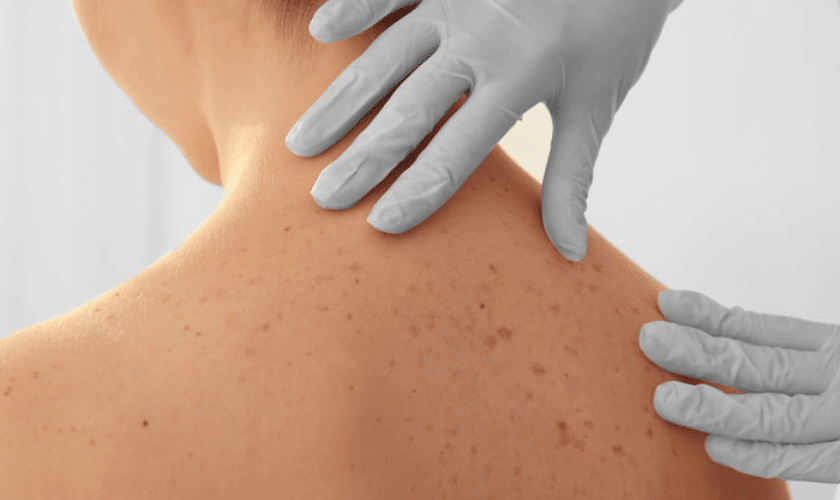Surgical dermatology has transformed the landscape of skincare, offering advanced procedures to effectively treat various skin conditions. While many dermatological issues can be managed with non-invasive treatments, certain conditions require surgical interventions to provide precise and long-lasting solutions. In this comprehensive blog, we will delve into the realm of surgical dermatology and explore five common skin conditions that can be effectively treated with surgical techniques. By understanding these procedures and the advancements in this field, you can gain insights into the remarkable results that surgical interventions can achieve in improving the health and appearance of your skin.
Skin Cancer
Skin cancer is a widespread and potentially life-threatening skin condition that requires prompt diagnosis and treatment. Surgical dermatology plays a pivotal role in the management of skin cancer, offering various procedures to remove cancerous lesions while preserving healthy tissue. Mohs surgery, considered the gold standard for treating skin cancer, involves the precise removal of the cancer cells layer by layer until only healthy tissue remains. This procedure ensures the highest cure rates and optimal cosmetic outcomes.
Additionally, excisional surgery and cryosurgery may be used to remove cancerous growths based on the type, size, and location of the tumor. Surgical dermatologists work closely with oncologists and pathologists to provide comprehensive care to patients with skin cancer, emphasizing the importance of early detection and appropriate treatment.
Skin Tags and Moles
Skin tags and moles are common benign skin growths that can cause cosmetic concerns or discomfort. Surgical dermatology offers effective methods for the removal of these growths. Excision, a simple surgical procedure, involves the precise removal of skin tags and moles using a scalpel or surgical scissors. Cauterization, which utilizes heat, can be employed to remove small growths and stop any bleeding. Cryotherapy, involving the use of extreme cold, is another option for removing skin tags and moles.
These procedures are typically quick and performed under local anesthesia, ensuring minimal discomfort for the patient. The removal of skin tags and moles can enhance both the appearance and comfort of the affected area.
Scar Revision
Scars can be a significant source of self-consciousness and may affect a person’s self-esteem. Surgical dermatology offers scar revision procedures to minimize the appearance of scars and improve skin texture. Surgical excision involves removing the scarred tissue and carefully closing the incision to create a more aesthetically pleasing result. Dermabrasion, a technique that utilizes a high-speed rotating brush or diamond fraise, helps to improve the texture of the scar by removing the top layer of skin. Laser resurfacing uses laser technology to target the scar tissue, stimulating collagen production and promoting smoother skin. These scar revision procedures are performed with precision, aiming to reduce the visibility of scars and improve overall skin appearance.
Keloids and Hypertrophic Scars
Keloids and hypertrophic scars are abnormal responses to skin injuries that can be aesthetically displeasing and cause discomfort. Surgical dermatology offers a range of treatment options for these types of scars. Surgical excision involves removing the excess scar tissue, and in some cases, the surrounding healthy tissue. Following the excision, techniques such as corticosteroid injections, cryotherapy, or laser therapy may be used to further improve the appearance and reduce the chances of recurrence. Corticosteroid injections are commonly administered to flatten the scar and reduce inflammation. Cryotherapy involves freezing the scar tissue to destroy the excess cells and promote smoother skin. Laser therapy targets the scar tissue with high-intensity light, promoting collagen remodeling and reducing scar visibility. These treatment options provide patients with the opportunity to alleviate the physical and emotional impact of keloids and hypertrophic scars, improving their overall well-being.
Cysts and Lipomas
Cysts and lipomas are common benign growths that can develop beneath the skin, causing discomfort or cosmetic concerns. Surgical dermatology offers effective solutions for the removal of cysts and lipomas. The surgical excision of cysts and lipomas involves making a small incision over the growth and carefully extracting it along with the surrounding sac or capsule. This procedure ensures complete removal and helps prevent future recurrences.
Sutures are then used to close the incision, minimizing scarring. The removal of cysts and lipomas can provide relief from pain or discomfort and restore confidence by improving the appearance of the affected area.
Surgical dermatology plays a crucial role in the treatment of various skin conditions, providing precise and long-lasting solutions. From skin cancer to scar revision, surgical interventions are tailored to the specific needs of each patient, ensuring optimal outcomes.
By employing advanced techniques and working in conjunction with other medical specialists, surgical dermatologists offer comprehensive care for their patients. If you are experiencing any of the aforementioned skin conditions, it is essential to consult with a qualified dermatologist specializing in surgical dermatology. They will assess your unique situation and recommend the most suitable treatment plan for your needs.
Through the advancements in surgical dermatology, you can regain confidence in your skin’s health and appearance, allowing you to lead a more fulfilling and comfortable life. Embrace the possibilities that surgical dermatology offers and discover the transformative impact it can have on your skin and overall well-being.

